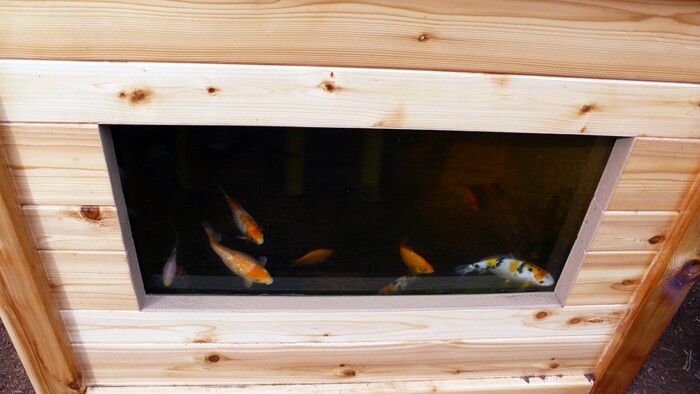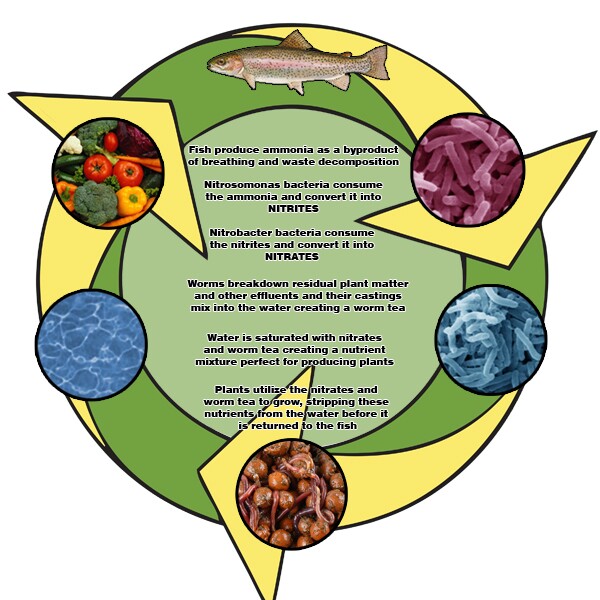Oh, choices, choices... do you grow vegetables, raise worms or raise fish? Well, the just-released Fishy Farm is designed to do all three in one hit. The small-scale aquaponic set-up is based around an ecosystem in which fish-waste-infused water fertilizes the veggies and feeds the worms, which in turn filter the water before it returns to the fish. All that users need to do is feed the fish, top up the water, and gobble up the bounty... except for the worms.
The system starts with the fish, who live in an aquarium at the bottom of the system. Although the supplied photos show not-likely-to-be-eaten goldfish and koi, the company suggests that food fish such as tilapia, perch, catfish or rainbow trout could also be kept in there.

The ammonia and effluent-containing water is pumped up to the plant grow bed, at the top of the system. Instead of soil, the bed contains a growing medium composed of expanded clay balls and volcanic rock, which the water easily flows through. The bed is consistently kept full of water, thanks to the proprietary Continuous Ebb and Flow system. As the water passes down through the growing medium, its ammonia is converted into nitrites and nitrates by naturally-occurring microorganisms, providing nitrogen for the plants. Also present in the medium are the worms, which break down residual plant matter and fish effluent into fertilizer for the plants.
In the final step of the process, the purified water is returned to the fish, and is oxygenated via a venturi mechanism.

The whole set-up is a microcosm of what many aquaculturalists and pond-keepers do, in that they pump used fish water through a biofilter that contains a filtration medium, bacteria, and sometimes plants.
Depending on how hungry you are, or just how much you like watching fish, you can chose between Fishy Farms ranging from 50 to 700 gallons (189 to 2,650 L) for US$999 to $2,599.










